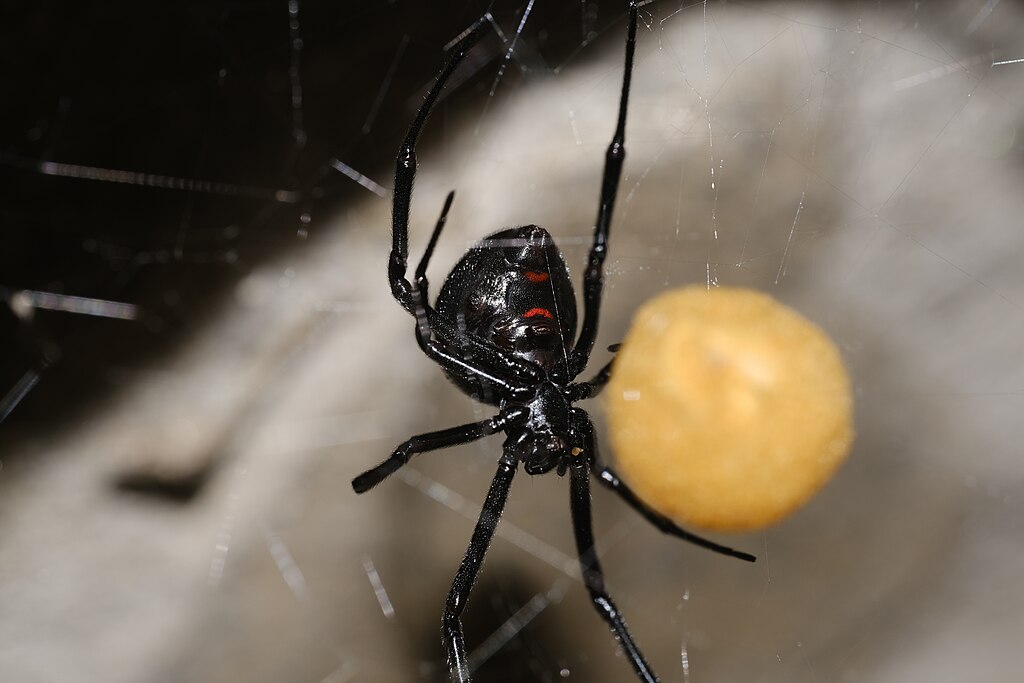In the intricate tapestry of life, reproduction stands as the ultimate biological imperative. While humans often view motherhood as a blend of joy and challenge, the insect world presents reproductive strategies that range from peculiar to genuinely disturbing. Across numerous species, female insects make the ultimate sacrifice, surrendering their lives to ensure their offspring survive. These brutal reproductive cycles represent nature’s harsh efficiency, where individual survival becomes secondary to genetic continuation. From mothers consumed by their young to fathers devoured during mating, these reproductive strategies might seem cruel by human standards but have evolved over millions of years as successful adaptations to challenging environments.
The Ultimate Maternal Sacrifice: Matriphagy

In the arachnid world, matriphagy—literally “mother-eating”—represents perhaps the most extreme form of maternal sacrifice. Species like the desert spider Stegodyphus lineatus demonstrate this behavior when the mother liquefies her internal organs through a process of self-digestion, allowing her offspring to consume her body. This macabre feast provides vital nutrients to the spiderlings during their critical early development stage. Research has shown that spiderlings who consume their mother have significantly higher survival rates than those deprived of this final meal. The mother’s body composition actually changes weeks before her death, transforming into an optimized nutritional package for her offspring.
The Black Widow’s Deadly Reputation
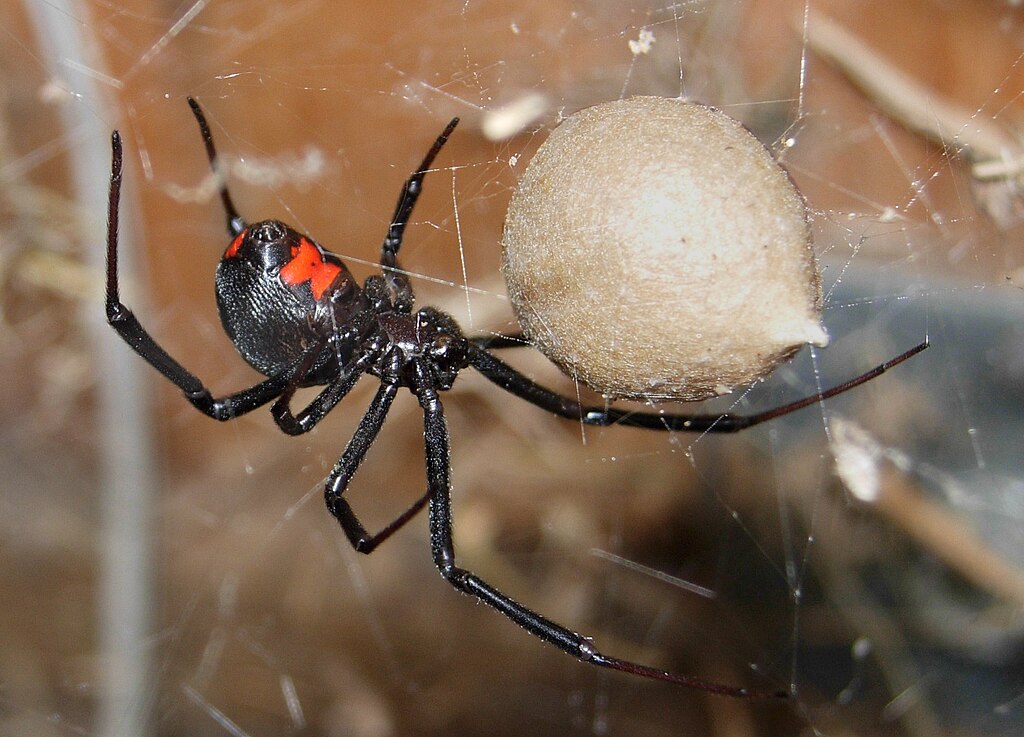
Few spiders have captured human imagination quite like the black widow, known scientifically as Latrodectus species, with their reputation for sexual cannibalism. Despite their notorious name, female black widows actually consume their mates in only about 2% of natural encounters, making this behavior far less common than popular culture suggests. When it does occur, the female consumes the male after mating, using his body as nutrition to fuel egg production. Interestingly, males of some black widow species actively sacrifice themselves, somersaulting into the female’s mouthparts during copulation. This seemingly suicidal behavior evolved because males who are consumed during mating can fertilize more eggs than those who survive, making death during reproduction genetically advantageous.
Praying Mantis: Mating with a Deadly Twist

The praying mantis has become infamous for the female’s habit of decapitating and consuming her mate during copulation. This brutal behavior serves multiple evolutionary purposes, providing the female with protein needed for egg development while ensuring the male completes insemination. When a male mantis loses his head, inhibitory neurons cease functioning, causing his reproductive organs to engage in more vigorous and prolonged mating. Laboratory studies have demonstrated that mantis couples engaged in sexual cannibalism produce significantly more eggs with higher fertility rates than those where the male survives. Remarkably, even after decapitation, the male mantis’s body can continue mating for several hours, controlled by ganglia in the abdomen rather than the brain.
Honeybee Queens and Their One-Time Suitors
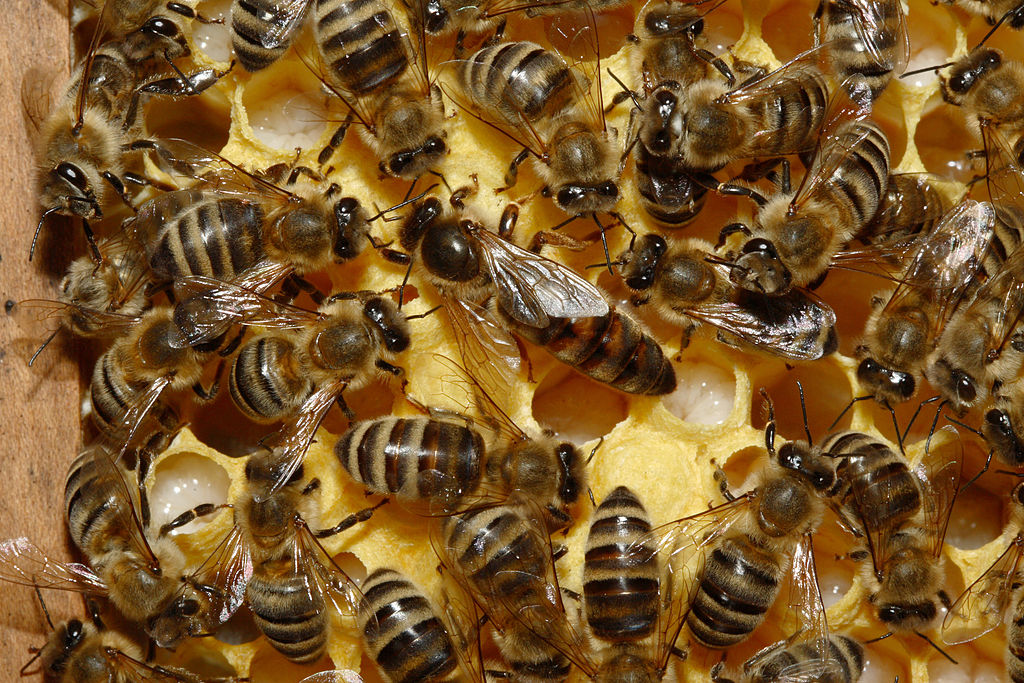
The reproductive cycle of honeybees demonstrates evolution’s ruthless efficiency in another dramatic way. Virgin queen bees embark on nuptial flights, mating with up to 20 male drones in mid-air. During copulation, the male’s reproductive organs catastrophically explode, remaining inside the queen to continue delivering sperm while the drone falls to his death. This explosive ejaculation is powerful enough to make an audible pop and propels the endophallus into the queen with such force that it tears from the male’s body. The queen stores hundreds of millions of sperm cells from these multiple matings in her spermatheca, using them throughout her multi-year lifespan to fertilize eggs. For the males, this reproductive sacrifice is their sole purpose—drones don’t collect nectar, build honeycomb, or defend the hive—they exist solely to mate and die.
Mayflies: Live Fast, Die Young
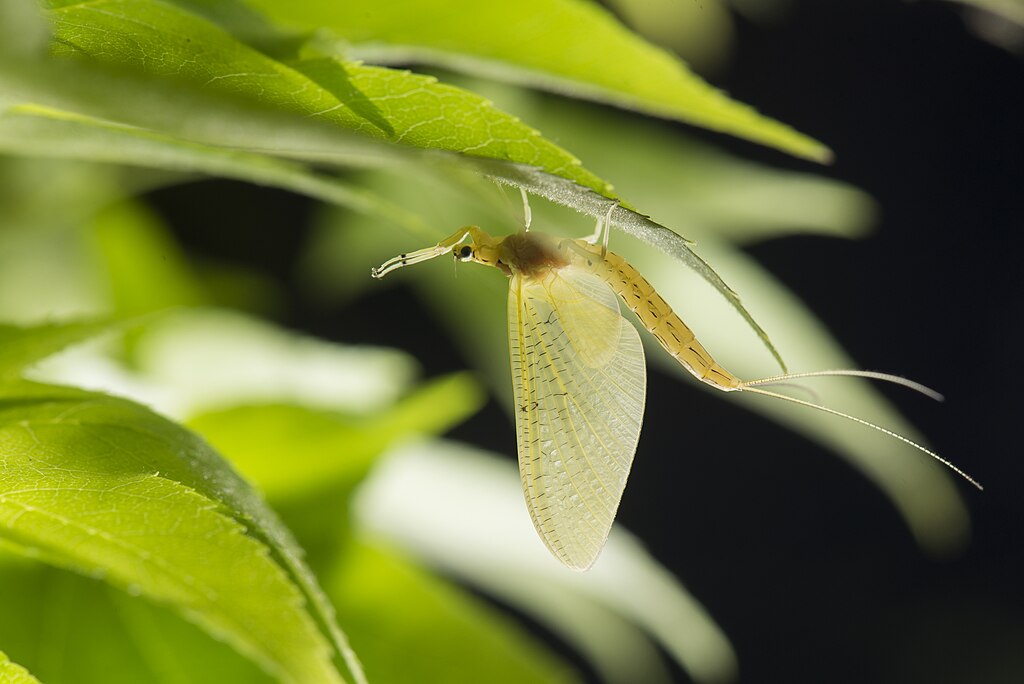
The ephemeral lives of mayflies represent one of nature’s most compressed reproductive cycles. After spending months or even years developing underwater as nymphs, adult mayflies emerge for a lifespan measured in hours—typically just 24 hours or less. These adults lack functional mouthparts and digestive systems, making feeding impossible. Their sole purpose is reproduction, with males dying shortly after mating and females perishing after depositing their eggs on water surfaces. The females of some mayfly species, like Dolania americana, have adult lifespans of just five minutes—barely enough time to mate, lay eggs, and complete their life cycle. Despite their brief existence, mayflies are remarkably successful, having survived for over 300 million years through this highly specialized reproductive strategy.
Octopus Mothers: The Long Goodbye

While not insects, octopus mothers exhibit one of nature’s most poignant examples of maternal self-sacrifice. Female octopuses of many species stop eating after laying their eggs, dedicating themselves entirely to protecting and aerating the clutch by continuously blowing water over them. This maternal devotion continues uninterrupted for weeks or months until the mother literally starves to death just as her offspring hatch. In deep-sea species like Graneledone boreopacifica, this brooding period can last an astonishing 53 months—the longest known developmental period for any animal. Scientists have discovered that this programmed death is regulated by secretions from the octopus’s optic glands, which trigger a cascade of changes leading to the mother’s demise after reproduction.
Tsetse Flies: Internal Incubation and Deadly Childbirth

Tsetse flies employ a reproductive strategy called adenotrophic viviparity, where a single egg develops inside the mother’s uterus, nourished by specialized milk glands. The larva grows to nearly the size of its mother before being born, creating enormous physical strain that can prove fatal, especially for first-time mothers. Each pregnancy cycle lasts about nine days, with females potentially producing 8-10 offspring over their lifetime, though each birth increases mortality risk. The tremendous maternal investment results in fewer but more developed offspring with higher survival rates. This unusual reproductive method demands substantial energy from the mother, who must consume 2-3 times her weight in blood to sustain each developing larva.
Surinam Toads: Backs Turned into Nurseries

The Surinam toad (Pipa pipa) demonstrates one of the most visually disturbing reproductive strategies in the amphibian world. During mating, the male attaches fertilized eggs to the female’s back, where her skin swells around each egg to form individual pockets. The embryos develop completely within these pockets, transforming the mother’s back into a honeycomb-like structure. After approximately three to four months, fully formed toadlets emerge from these skin pockets, sometimes causing injuries or infections that can prove fatal to the mother. Each female can carry up to 100 developing offspring on her back, creating significant physical stress and increasing vulnerability to predators and disease during the extended brooding period.
Fig Wasps: Trapped in a Floral Tomb

The extraordinary relationship between fig trees and their pollinator wasps represents one of nature’s most intricate co-evolutionary partnerships—and one that inevitably ends in maternal death. Female fig wasps enter young figs through a tiny opening called the ostiole, which is so narrow that the wasp loses her wings and parts of her antennae while squeezing through. Once inside, she pollinates the fig flowers, lays her eggs, and dies within this enclosed chamber. Her decomposing body provides nutrients that contribute to the developing fig. The male offspring hatch first, mate with their still-developing sisters, and then tunnel escape routes before dying within their birth fig. Only the fertilized females escape, carrying pollen to continue the cycle at another fig tree.
Mites with Matricidal Hatching

Several mite species practice a particularly gruesome reproductive strategy called matricidal endotoky, where the young develop inside the mother’s body and eventually consume her from within. In species like Adactylidium, the mother mite provides her body as both incubator and first meal for her developing offspring. The larvae develop inside their mother, feeding on her internal tissues until they eventually kill her and emerge from her empty exoskeleton. Most remarkably, mating occurs inside the mother’s body before the offspring even emerge—brothers mate with their sisters while still inside their dying mother. Only fertilized females emerge from the maternal corpse, with males never experiencing the outside world during their brief existence.
The Grisly Life Cycle of Parasitoid Wasps
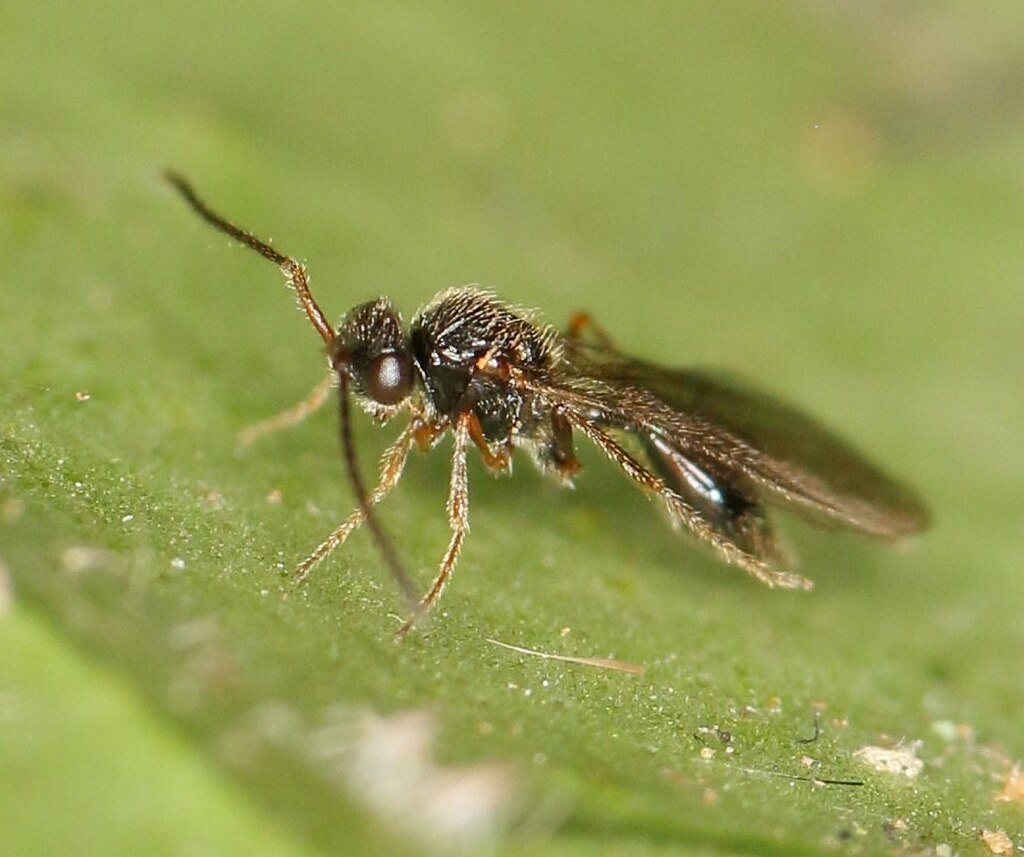
Parasitoid wasps have perfected one of nature’s most disturbing reproductive strategies by using other insects as living incubators for their young. Species like Cotesia glomerata inject their eggs into caterpillars along with a cocktail of viruses that suppress the host’s immune response. The wasp larvae develop inside the living host, strategically consuming non-vital tissues first to keep their victim alive as long as possible. When ready to pupate, the larvae synchronously burst through the caterpillar’s skin, often while it’s still alive, and spin cocoons on or near its body. Some parasitoid species manipulate their host’s behavior before emerging, forcing the caterpillar to guard the very cocoons that contain its killers. This gruesome reproductive strategy affects approximately 10% of all insect species, making it one of evolution’s most successful adaptations.
Termite Queens: Reproductive Imprisonment

Termite queens represent a different kind of reproductive sacrifice—surrendering mobility and independence for extraordinary reproductive capacity. Once a queen establishes a colony, her abdomen swells to grotesque proportions, rendering her incapable of movement and utterly dependent on worker termites. In species like Macrotermes bellicosus, the queen’s abdomen can expand to 20,000 times its original size, transforming her into a living egg-production factory capable of laying up to 40,000 eggs daily. This extreme physiology places enormous strain on the queen’s body, with her heart working continuously to pump hemolymph through her massively extended abdomen. Despite these physiological challenges, the reproductive payoff is substantial—some termite queens live for decades, producing millions of offspring during their imprisoned existence.
Evolutionary Significance of Reproductive Sacrifice

These brutal reproductive strategies, while disturbing from a human perspective, make perfect evolutionary sense. In environments where resources are scarce or predation risks high, sacrificing the parent to increase offspring survival can be genetically advantageous. The concept of inclusive fitness explains how genes promoting self-sacrifice can spread if they sufficiently benefit genetic relatives. For insects with short lifespans, the reproductive phase often represents their final life stage, making post-reproductive survival irrelevant to evolutionary success. Scientists have noted that extreme reproductive sacrifice typically evolves in species where parents have limited ability to provide ongoing care to offspring, making a one-time nutrient donation through body sacrifice more efficient. These strategies reveal how natural selection prioritizes genetic continuity over individual survival, crafting reproductive systems that maximize offspring success regardless of parental cost.
Conclusion

The insect world offers a sobering perspective on reproduction that challenges our human-centered views of parental sacrifice. While we might recoil at mothers consumed by their young or fathers dying during mating, these strategies have proven remarkably successful over evolutionary time. These reproductive cycles remind us that nature operates not on sentimentality but on brutal efficiency—maximizing genetic propagation through whatever means necessary. As we marvel at these adaptations, we gain insight into the diverse solutions evolution has crafted for life’s fundamental challenge: producing the next generation. These maternal sacrifices, extreme as they may seem, represent not cruelty but the extraordinary lengths to which life will go to ensure its continuation.

